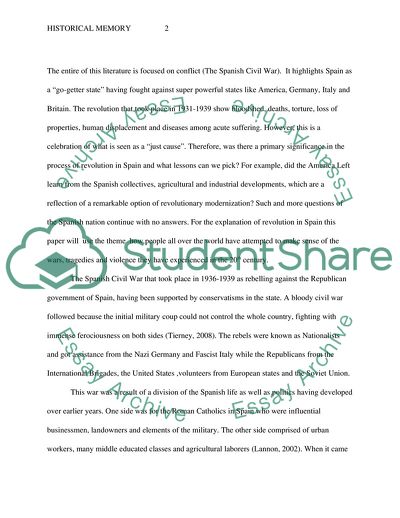Cite this document
(The Spanish Civil War: Growth of Industrial and Agricultural Sectors Research Paper Example | Topics and Well Written Essays - 2250 words, n.d.)
The Spanish Civil War: Growth of Industrial and Agricultural Sectors Research Paper Example | Topics and Well Written Essays - 2250 words. https://studentshare.org/history/1816665-historical-memory
The Spanish Civil War: Growth of Industrial and Agricultural Sectors Research Paper Example | Topics and Well Written Essays - 2250 words. https://studentshare.org/history/1816665-historical-memory
(The Spanish Civil War: Growth of Industrial and Agricultural Sectors Research Paper Example | Topics and Well Written Essays - 2250 Words)
The Spanish Civil War: Growth of Industrial and Agricultural Sectors Research Paper Example | Topics and Well Written Essays - 2250 Words. https://studentshare.org/history/1816665-historical-memory.
The Spanish Civil War: Growth of Industrial and Agricultural Sectors Research Paper Example | Topics and Well Written Essays - 2250 Words. https://studentshare.org/history/1816665-historical-memory.
“The Spanish Civil War: Growth of Industrial and Agricultural Sectors Research Paper Example | Topics and Well Written Essays - 2250 Words”. https://studentshare.org/history/1816665-historical-memory.


